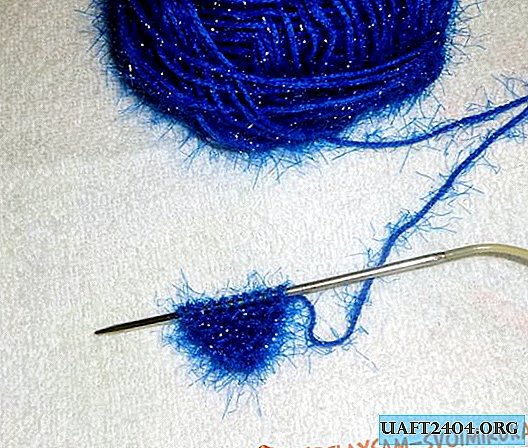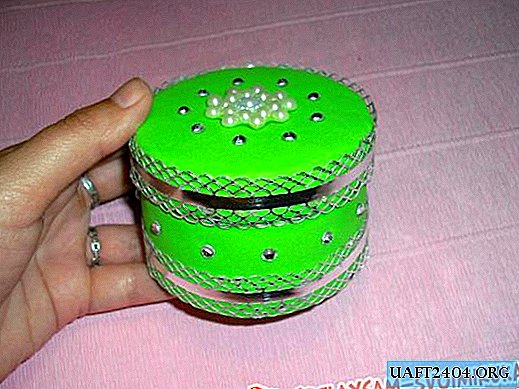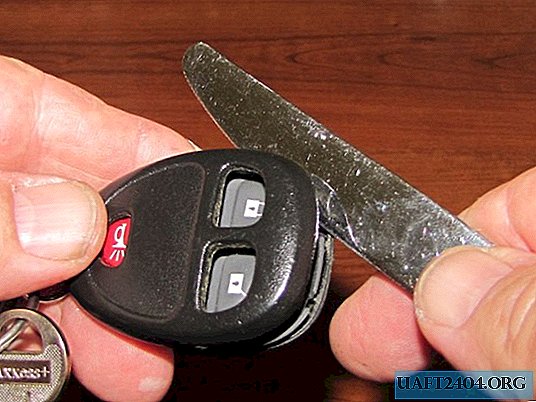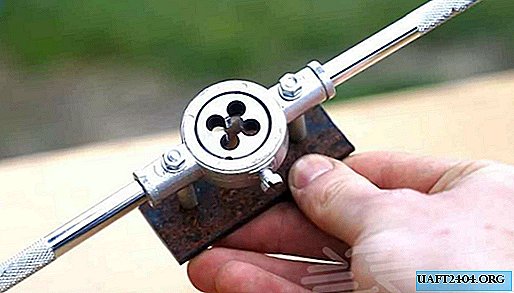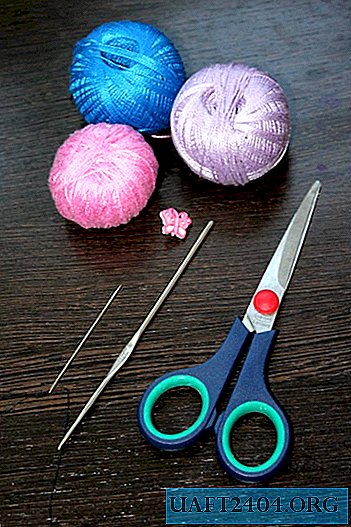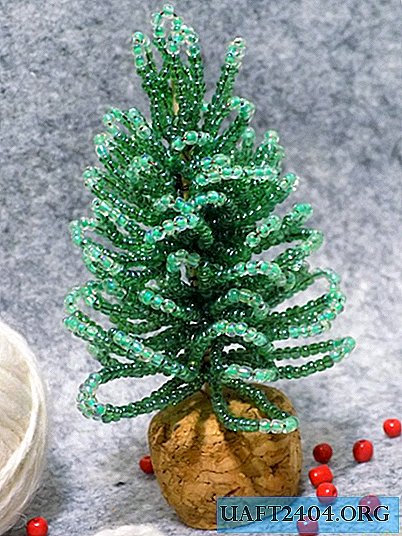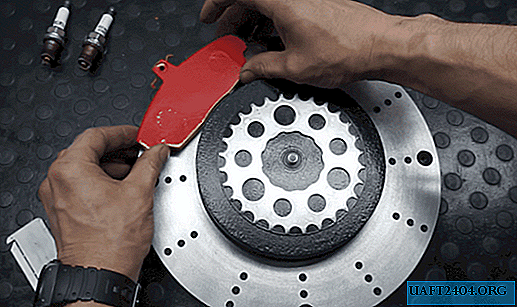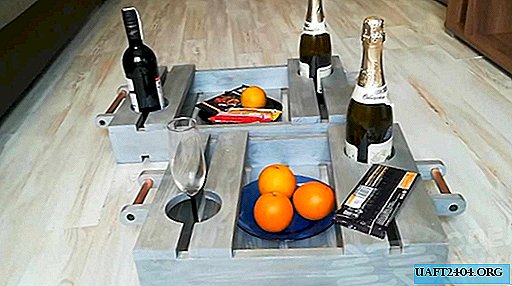Share
Pin
Tweet
Send
Share
Send
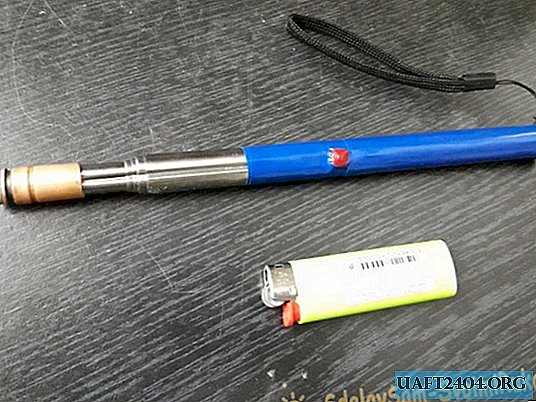
This is the last stage of moral irritation ... especially if no one is around to bring the fallen thing. It is necessary to get off, lift, and climb back. And also, if you are standing, for example, resting your knee on the back of the sofa, and a screw or screwdriver fell behind the sofa! In general, making a small repair alone, it is better to properly prepare for it so that it goes with the least troubles and annoying factors. In this case, telescopic probe capture for fallen metal (not large) objects will greatly help. Such a thing can be ordered in the online store, where I actually spied the idea ... However, I have never met this probe in a live sale, in stores, therefore, and I propose to assemble it myself, with my own hands. What is most interesting in this matter is that almost any junk is suitable for assembly! The only irreplaceable and integral part of the structure is the telescopic tube. Ideally, if it is a telescope from a broken selfie stick. But you can take a mustache from an old indoor antenna; it is thin, long and light, and extends more than a meter. You can, of course, just wind a magnet to a piece of wire, and then make your work easier, but I propose to approach the assembly more thoroughly, and do the thing not just once, but for permanent storage and use at the right time, so that it is always at hand . With backlight and comfortable grip.
Will need
- Telescopic tube from a non-working or unnecessary selfie stick (or a similar telescopic tube).
- Thin two-core cable (better from the same broken selfie stick).
- Thin wiring (red and blue).
- A neodymium magnet in the form of a washer with a hole with an outer diameter of about 10 millimeters.
- 3 volt LED.
- Tube in the outer diameter of the magnet, 3-4 cm long
- Snap button.
- Three new AG13 batteries (it's a clock battery, it's a “tablet").
- Two old and fully discharged AG13 batteries.

Tool and consumables:
- Soldering iron, flux and tin.
- Seconds glue.
- File or file.
- Shrink tubes.
- Scissors.
- Stationery knife.
- Scotch.
- Self-adhesive color film.

Making a telescopic probe
Since we already have a ready-made housing (telescopic tube), we start with a battery for a future product.

The elements of AG13 themselves have very vague voltage data. Although 1.5 volts is indicated on the package, measurements of different, new batteries of this type always show different results. I myself, unfortunately, could not conduct these measurements, but having visited several forums on this topic on the Internet, I was convinced that the voltage on batteries of this type varies from 1 to 1.5 volts. Therefore, it turns out that they are mounted in three pieces each in key rings with a 3-volt LED, and not two. In addition to the three new batteries, I picked out two more old, completely run-down and dead batteries from the old key fob; they will serve as contacts for new ones.


In a good way, of course, you should cut the contacts out of metal, but I decided to save time ... in the end, nothing terrible will happen (and did not happen!) When working with dead batteries. So, for starters, solder the contacts. We solder the red wires to one of the old batteries, to the positive contact, to the second battery, to the minus, solder the blue wires.

Next, we take a piece of adhesive tape and put on its sticky side, on the edge, new batteries, sequentially (plus to minus), close to each other so that they are in contact. Along the edges to these batteries, also sequentially, we apply the dead batteries with soldered wiring. Now carefully wrap all the connected batteries in tape. Cut off (or fuse with a lighter) the edges of the roll with batteries.

We place this block inside a heat-shrink tube of a suitable diameter, and seat the tube by heating it with a lighter. One such disposable battery for the LED will learn:
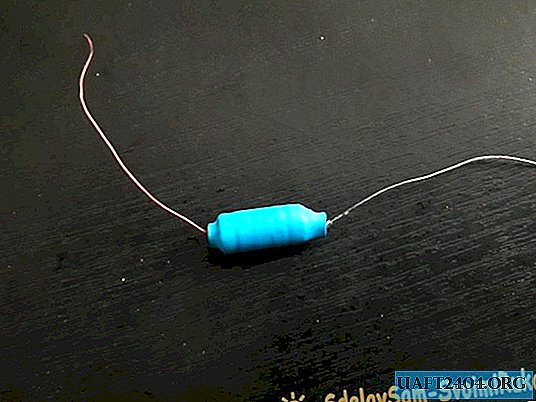
I think it’s not necessary to describe how long tablet batteries can work, especially considering the intensity of use of this product. So you can not think about replacing the battery. Well, when the deadline nevertheless approaches, to collect the same battery is a matter of ten minutes! Now we will make the working head of the probe itself, which will highlight, as well as collect fallen objects from the floor. It will take a tube three to four centimeters long and a diameter with the diameter of a neodymium magnet. I adapted for this purpose a shot sleeve; its drilled capsule is ideally suited both for the diameter of the LED and the diameter of the magnet hole. So, glue the magnet to the tube (or sleeve) using a second glue. It is glued, not soldered, otherwise the magnet will lose its properties when heated.
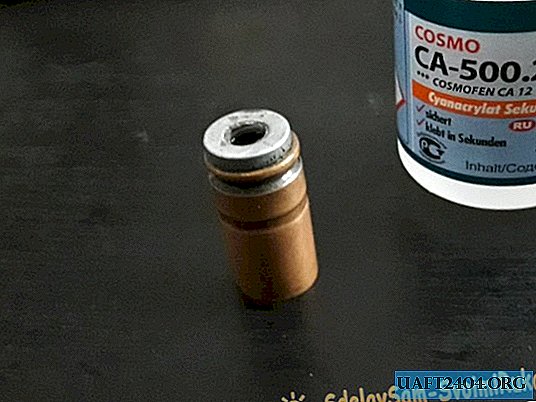
Next, we take a long two-wire cable, solder one of its wires to the antennae of the LED, the second wiring to one of the contacts of the battery. The second contact of the battery is soldered to the free antennae of the LED.


Only before soldering, find out where the plus and minus signs are located at the LED and do not forget to put thin heat pipes on the wires. Now we pass the free end of the cable into the telescope, from top to bottom, and carefully, so as not to interrupt the thin wires, push the battery next to the upper end of the telescope.

If the battery dangles freely there, we increase its diameter with the help of electrical tape. Push the LED into the tube (sleeve) until its crown appears from the hole of the magnet.

We drop a drop of second glue on the LED to fix it in a magnet (by the way, if you want the light from the LED to be scattered, and not to hit one point, due to the drop-shaped shape of the LED, file off the tip of the LED sticking out from the center of the magnet). We install a tube (sleeve), with a magnet and an LED glued to it, on the tip of the telescopic tube with a battery inside.

If the caliber of the sleeve turned out to be larger than the tip of the tube, again, we increase the required diameter with the help of electrical tape. We put it on the joint between the sleeve and the electrical tape, second glue - the head will hold tight, but it will not be difficult to remove it, if the battery is replaced, since the glue will not come into contact with the housing tube itself.

When the glue dries, you can cut off the sticking edges of the tape with a clerical knife. Next, we will deal with the closure. At first, I thought about leaving that button-lock that was on the handset initially, which served as the camera trigger on the phone. But this button had a small board - if there was one, the LED at the end of the tube glowed constantly, even without pressing the button, albeit not as brightly as when pressed. I had to remove the button from the case, break off this scarf, and solder the cable wires to the contacts of the contactor directly.

Now we remove the cable with the button from the lower end of the telescope to the required length, and glue the cable with the button to its original place.

The bulk of the work has been done. Now it remains to stick part of the tube with the button with adhesive tape, the place where the palm will be in contact.

When laying the film on the button, you do not need to press it hard so that the button does not turn on spontaneously in the future, and the remaining waves and unevenness of the film at the edges can be easily set by heating the lighter. Like a heat pipe. Well, using a tube with sharpened edges, cut out a red circle, which will indicate the button on the handle, and stick it on the appropriate spot.


That's all. You can experience it. Finally, put on the end of the handle the cap with a loop that used to cover the end of the selfie stick.

In the future, during work, you can put this loop on your wrist so as not to drop this probe from your tired hands and not to get off, nevertheless, from the stool.
Share
Pin
Tweet
Send
Share
Send

